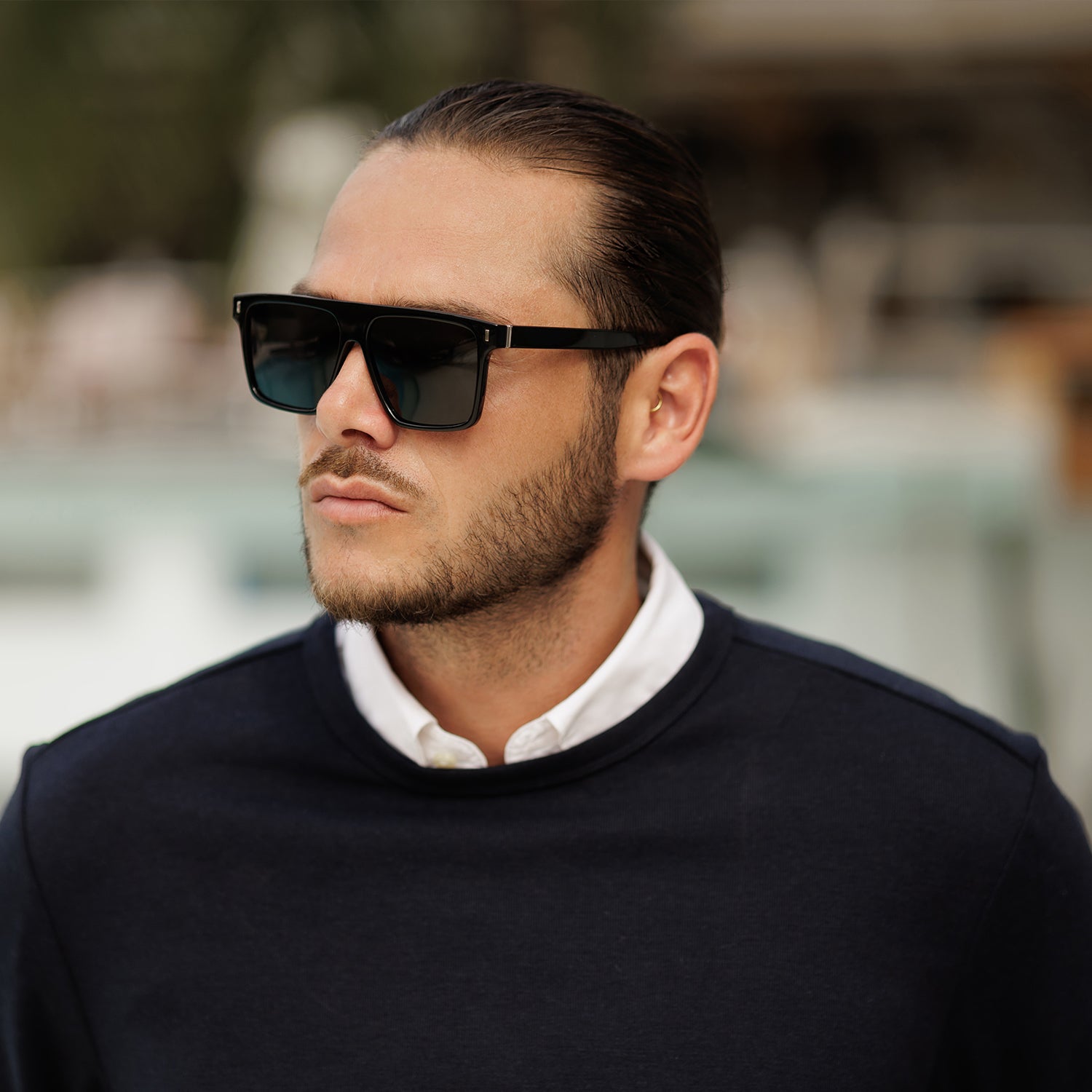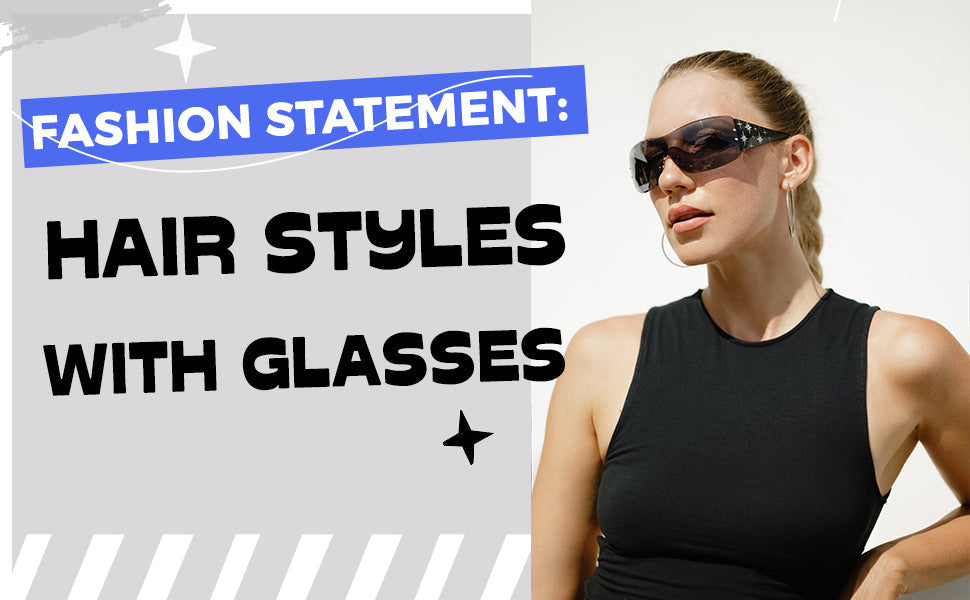
A Complete Guide to What Are Low Bridge Glasses
Even the best glasses may not look good if we do not place them perfectly on our faces. The frame dangling too low or above your eyebrows would not only look funny but affect your vision as well. Just holding the glasses firmly is not enough; they should fit aesthetically too.
The two key elements that hold your glasses securely are the nose mount pads and the temple arms. While it is easy for the arms of the glasses to be held over your ears, the comfort of wearing eyewear depends on where the nose pad is placed.
We position the nose mount pad of the glasses as per your nose bridge. What is a nose bridge? Does it vary from person to person? Can stylish, expensive glasses fit any type of Nose Bridge?
Let’s understand the significant impact of Nose Bridge and how to pick the right Low Bridge Glasses.
- -What are Low Nose Bridge Glasses?
- -Why is it Called Asian Fit Glasses?
- -Are Low Bridge Glasses Different From Standard Fit Glasses?
- -What to Look for When Buying Low Bridge Glasses?
What is a Low Nose Bridge?
The nose bridge is the bony portion of your nose that starts on the lower part of your forehead, between your eyes. A low nose bridge starts slightly lower than usual. How do you know if you have a low nose bridge? Here is a simple way.
Locate the top of your nose bridge with your finger. Then, make sure that you align your finger above, in line with, or below, your pupils. You have a low nose bridge if it is in line with or below your pupils. If it is above your pupil, then you need a traditional glass frame.
Your nose bridge should not feel the pinch by your glasses as they should essentially fit snugly. Typically, any movements like bending down, turning your head side to side, or making any other movement should be normally possible without your glasses falling off or sliding up and down your nose.
Why is it Called Asian Fit Glasses?
Low bridge glasses, also known as Asian fit eyewear, or Omni fit, can be more comfortable for people of Asian origin. The facial features of Asians differ from those of Americans or Europeans. Although it is not a general condition, some observe that a significant percentage of Asians have a low-nose bridge.

So, is that why it is called Asian-fit glasses? Yes, because low bridge glasses are much more in demand in Asian countries than in other regions. These eyewear and sunglasses are designed to fit particular facial features. We list some of the prominent features of Asian people below:
Broader Face
Those with broader faces typically have lower nose bridges. They have difficulty wearing regular glasses because they are too narrow and uncomfortable.
High Cheekbones
As a broad face, high cheekbones show a low nose bridge. Glasses touching their higher cheeks lead to discomfort and resentment with their appearance.
Lower Nose Bridge
As explained earlier, the top of the nose is slightly lower than the forehead.
If the standard glass frames do not fit well, then you should give Asian-fit glasses a try.
Are Low Bridge Glasses Different From Standard Fit Glasses?
Low Bridge glasses are not entirely different from the standard ones. The style, color, and materials would be more or less similar, but the design and position of the nose mount pad would be different. They are placed slightly lower to settle snugly on a low nose bridge.
Most of the low bridge glasses or Asian fit have thicker nose mount pads. They are specifically designed to raise the frames off your cheekbones. These low bridge glasses are properly positioned on your face away from your eyelashes to allow them to sit snuggly higher on the nose.

Standard-fit glasses have a shorter bridge, so, if you have a low nose bridge, they might not fit you well.
TIP: If your glasses are frequently brushing across your cheeks or striking your eyelids, it's time to try an Asian fit.
Also, the lenses are smaller, wider, and slightly tilted to keep them away from brushing your eyelashes. It creates a space between your face and lenses from touching your cheekbones. The low bridge glasses minimize the curves of the frames to protect them from grazing your temples and to keep them straight and erect.
To prevent the glasses from being too tight at the temples or sitting too high on your face, the frame is larger and gently curved to suit rounded and heart face shapes.
What happens if you wear a standard glass on a low-nose bridge? The nose pad would fall further down to where the bridge starts. This could change everything. The pupil distance (PD) will be incorrect. It should be centered horizontally.
So, when you are wearing a progressive lens, the intermediate and short-distance focus will fall lower. You would frequently keep pushing up your glasses to focus, causing discomfort and eyestrain.
What to Look for When Buying Low Bridge Glasses?
Your eye shape, face type, and bone structure can be grouped to arrive at a particular design for low bridge glasses. But remember, what suits one person may not fit another. The basic features of low bridge glasses are the same as a standard fit, that is, they should align frames with your brow line. And the lower half of the lenses should not rest on your cheeks.
Your glasses should sit higher and more securely on each side of the nose rather than immediately on the slope. This enhances stability and holds firmly while also avoiding the bottom lenses from sitting uncomfortably on the cheeks, which leave unpleasant red marks.
TIP: Choose a frame color that complements your skin tone and eye color.
Make sure it has longer temple arms when choosing the low bridge glasses because they provide the extra space needed to help relax the nose and cheeks. The arms enable perfect alignment behind the ears, keeping your frames sleek and secure.
Conclusion
To rest against the sides of the nose, many low bridge fittings have larger nose pads. It ensures that our frames rest on our noses rather than on our cheeks. We can easily locate frames with larger nose pads and curved temples that better fit the contours of our faces and prevent any movement of our glasses.
What Are Low Bridge Glasses? Addressing Common Queries
Do Low Bridge Glasses Only Cater to Specific Face Shapes?
Contrary to popular belief, low bridge glasses are designed for individuals with lower nose bridges, accommodating various face shapes. Discover the inclusivity of these glasses that prioritize comfort for everyone.
Can I Adjust Low Bridge Glasses at Home?
Yes, you can! Learn the art of adjusting low bridge glasses at home with our step-by-step guide. Say farewell to discomfort by ensuring your glasses fit perfectly with simple DIY adjustments.
Are Low Bridge Glasses Only Available in Certain Materials?
Explore the versatility of materials used in crafting low bridge glasses. From metal alloys to acetate, understand the diverse options available and choose the material that aligns with your style and preferences.
Do Low Bridge Glasses Limit Frame Styles?
Absolutely not! Dive into a world of endless possibilities as low bridge glasses come in various frame styles. From aviators to cat-eye frames, find the style that complements your unique fashion sense.
Can Low Bridge Glasses Be Worn All Day?
Discover the comfort that accompanies all-day wear with low bridge glasses. Uncover the features that make these glasses ideal for prolonged use, ensuring you experience both style and comfort from sunrise to sunset.
How Often Should I Replace My Low Bridge Glasses?
Explore the lifespan of your low bridge glasses. From wear and tear to changing trends, understand when it's time to bid farewell to your current pair and embrace the next stylish chapter in eyewear.





